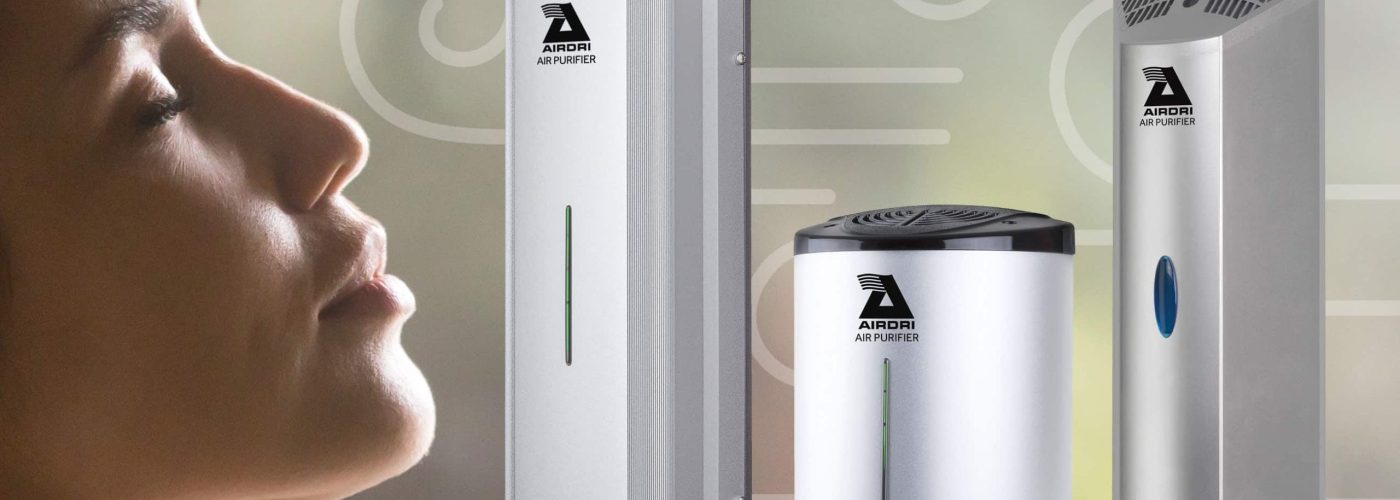As employers strive to make environments as safe of possible for staff returning after working from home, many companies are looking at technology to create healthier, safer workspace for their colleagues.
One of the main ways that illnesses, including coronavirus, can spread through workplaces is via airborne particles which are then directly inhaled, or can land on surfaces where they recolonise and can be transferred into a host via their hands. A single bacteria cell can multiply to over eight million times in an eight-hour period, which can be a huge problem with multiple colleagues touching hundreds of different surfaces a day.
Effective cross infection control needs to be in place to ensure staff confidence and safety. Chemical fogging and air filtration are becoming very popular ways to kill bacteria and viruses in the air, especially in the age of Covid-19, and on surfaces in places of work, but what are the pros and cons of each?
Chemical fogging
Chemical fogging (sometimes called ‘smoke-bombing’) is the act of spraying a fine coating of disinfectant chemicals across an entire room, including all of the surfaces. It can be used for larger areas where other types of cleaning or decontamination may not achieve full coverage or completely rid the space of bacteria and viruses. During the coronavirus pandemic it has become one of the main ways for many types of businesses to rid spaces of infectious particles. The fine mist reaches into corners and difficult to reach areas and can also penetrate porous surfaces. It also means surfaces do not need to be rinsed afterwards, which can be a benefit.
Chemical fogging is very effective at removing microbiological contamination. It is a quick and efficient way to kill germs and viruses on surfaces, however once complete, viral or bacterial colonisation will recommence. The process needs to be repeated regularly to keep control of bacteria and viruses from building up again.
To effectively decontaminate an area using chemical fogging it needs to be completely free of people until the process has finished. The area will need to be ventilated for up to 60 minutes after fogging process has taken place and left for a period of up to four hours before employees can return, which can be disruptive for workforces.
Fogging is not a one-product fits all solution. There are many types of disinfectant, which can only be effective on certain types of virus or bacteria, so the cleaning specialist would need to advise on the best product for requirements.
The cost of chemical fogging starts from around £250 per hour, however it will need to be repeated every time there is a case of infection, meaning the cost to the business can soon mount up, depending on the size of the area.
Air Sanitisation Units
Air sanitisers such as the new Steraspace range from Airdri help to control infections by killing bacteria and viruses, mould and fungi. As an added advantage the units also remove pollen, pollution, smoke and odours.
The Steraspace range from Airdri is unique in that it works by producing a continuous flow of disinfecting plasma into the air generated by combining photo catalytic disinfection, germicidal irradiation and dual waveband UV technology.
The technology has been tested at Porton Down and is proven to kill 98.11% of airborne and 99.6% of surface micro-organisms. Steraspace has also been tested by the Health Protection Agency and the efficacy results show that within five minutes 96-98% of airborne viruses were eliminated.
Depending on the size of the room, the cost of installing an air sanitisation unit starts at around £250 and once installed the unit can work continuously in the background, constantly sanitising the area and surfaces in the room.
When it comes to the economic factors of keeping your office safe, the Steraspace is definitely the more cost-effective option – the units cost as little as £2 a month to run, with an annual outlay of around £50 for a new bulb.
Other options for cross infection control:
Ultra-Violet Light
These blue lights can be very effective, the germicidal waveband UV will kill most micro-organisms, however direct contact with this waveband of UV is harmful to humans and so must be shielded. Although this then also significantly reduces the contact with any micro-organisms.
Filtered Pumps and Fans
Whilst more of an air-purifier system than air-sanitation, HEPA (High Efficiency Particulate Air) filters work by trapping micro-organisms in fine fibres arranged into a matt to intercept particles. However, all of the air in the room must pass through the filter in order for it to be purified; some viruses are so small they flow straight through the filters and they escape back into the air. This method does not sanitise surfaces and requires regular filter changes, which can be costly.
Bleach and Liquid Solutions
Bleach can kill 99.9% of viruses and bacteria and is a strong and effective disinfectant, however it is also harsh on skin and traces of it on surfaces can cause irritation. It can also erode and damage some materials so only suitable for use in certain areas. Once an area has been cleaned with bleach or liquid solution, the colonisation of bacteria starts very quickly after. This approach also only focusses on surfaces and not the sanitisation of the air.





